With Nobel Laureate Dr Thomas Cech attending in person.
the
CCIR Student
Research
Symposium
at the University of Cambridge
SUBMISSION DEADLINE
June 15th, 2025
SYMPOSIUM ACCEPTANCE RESULTS
July 1st, 2025
SYMPOSIUM AND RECEPTION
July 30th, 2025
(University of Cambridge and online)
The symposium is open to apply for all current and past CCIR students, who enrolled before June 15th, 2025, regardless of the status of their research.
About
the Symposium
Every year, a select number of CCIR’s students have the opportunity to present their research findings on the campus of Cambridge, to showcase their work and their achievements. At the most recent CCIR Student Research Symposium, CCIR student researchers from diverse backgrounds presented at Churchill College at Cambridge in a hybrid format in 2022.
This year, the CCIR Student Research Symposium will once again be hosted at Cambridge—this time at King’s College, both in-person and virtually.
The symposium is open to apply for all current and past CCIR students, who enrolled before June 15th, 2025, regardless of the status of their research. Participants must submit a 200 to 400 word fully polished abstract. A most recent draft of the paper is also encouraged, but not required for the submission.
Please note that not all submissions will be accepted for the Symposium, due to the limited number of presentation slots available. The submissions will undergo a rigorous peer-review process by both CCIR Academics Team and professor mentors’ review. Students with outstanding research projects will be invited to present. The symposium acceptance results will be announced on July 1st, 2025.
Selected students will be invited to present at the Symposium at King’s College, University of Cambridge on July 30th, 2025. A completed paper is not required, but selected presenters must prepare a presentation. For presenters that could not join in person, they are encouraged to present virtually via Zoom at scheduled time slots.
The CCIR Student Research Symposium presenters, together with CCIR Cambridge Re:think Essay Competition award recipients and their companies, are also invited to the Reception hosted at the hall of King’s College, on the evening of 30th July, 2025. The Reception is a traditional Oxbridge style high table dinner, with select CCIR professor mentors expected to sit at the high table.
For the invited student presenters, there is no cost for presenting at the Symposium and attending the Reception. Tickets for additional attendees accompanying invited presenters to the Reception at the King’s College hall are available in limited quantity.
The Symposium does not accept papers from the public, but they are welcomed to attend as observers or watch the livestream. The evening Reception is a closed door event.
The Think Tank
Nobel Laureates Keynote
Speeches
We are beyond excited to announce that multiple Nobel laureates have confirmed to attend and speak at CCIR’s Student Research Symposium.
Symposium and Reception at
Cambridge
Both the student presentations and the Keynote speech by Nobel laureates will take place (in person and virtually) at the conference rooms of King’s College at the University of Cambridge. They are also invited to the Reception hosted at the hall of King’s College, on the evening of 30th July, 2025. The Reception is a traditional Oxbridge style high table dinner, with select CCIR professor mentors expected to sit at the high table.
Research Submission
Interested CCIR students can submit their abstracts before the submission deadline of June 15th, 2025.
Keynote Speech by Nobel Laureate
We are beyond excited to announce that Dr Thomas R. Cech, the Nobel Prize laureate in Chemistry 1989, has confirmed to attend and speak in-person at this year's ceremony on 30th July, 2025.
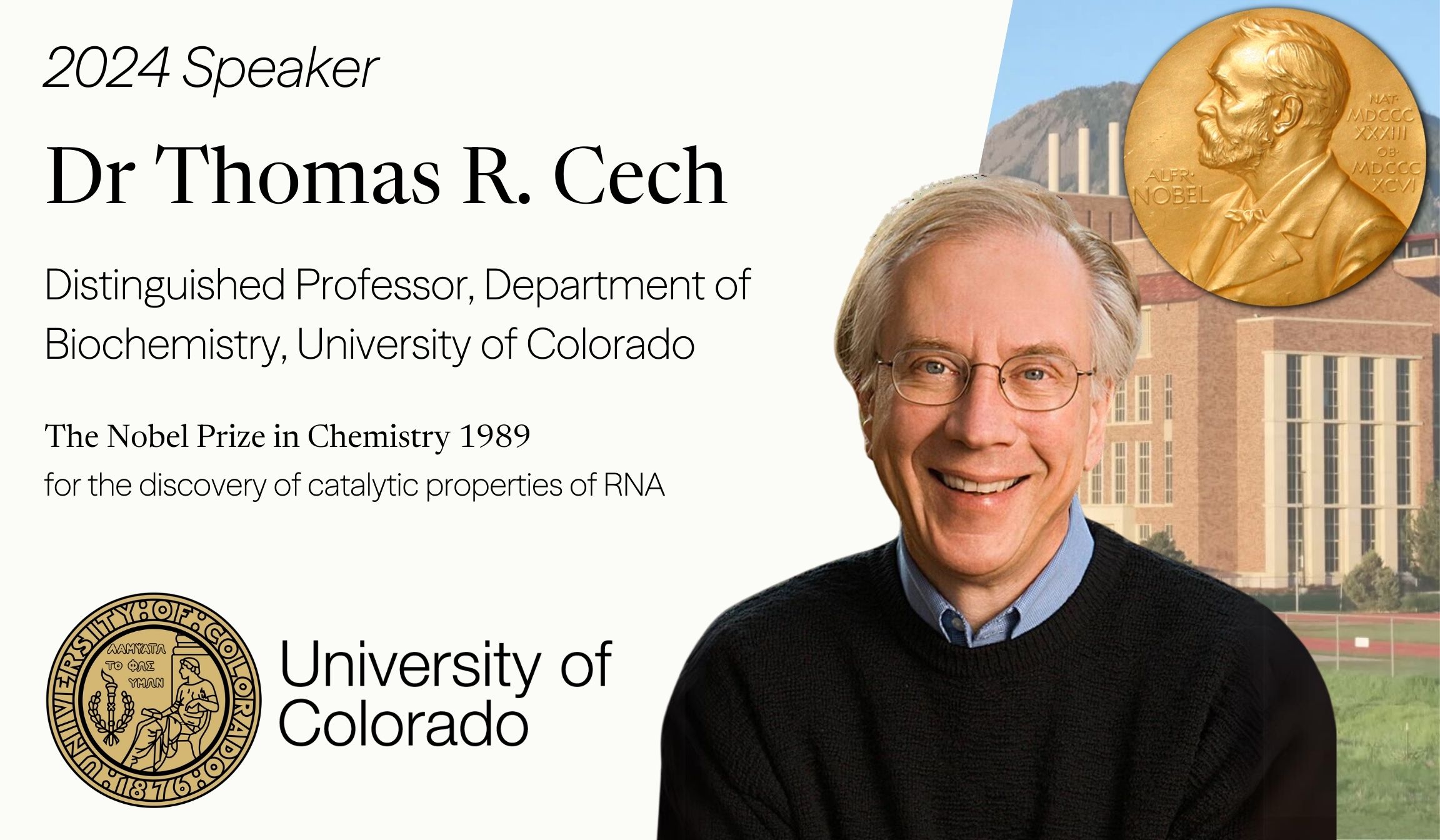
Dr Thomas Cech is an American chemist who shared the 1989 Nobel Prize in Chemistry with Sidney Altman, for their discovery of the catalytic properties of RNA. Dr Cech discovered that RNA could itself cut strands of RNA, suggesting that life might have started as RNA. He found that RNA can not only transmit instructions, but also that it can speed up the necessary reactions.
He also studied telomeres, and his lab discovered an enzyme, TERT (telomerase reverse transcriptase), which is part of the process of restoring telomeres after they are shortened during cell division.
As president of Howard Hughes Medical Institute, he promoted science education, and he teaches an undergraduate chemistry course at the University of Colorado.
Nobel Laureates Attended
We are beyond excited to announce that ten Nobel laureates have attended and spoke at previous years' research symposium. They have each delivered a keynote speech to the attendees and shared their insights with students during the live sessions.
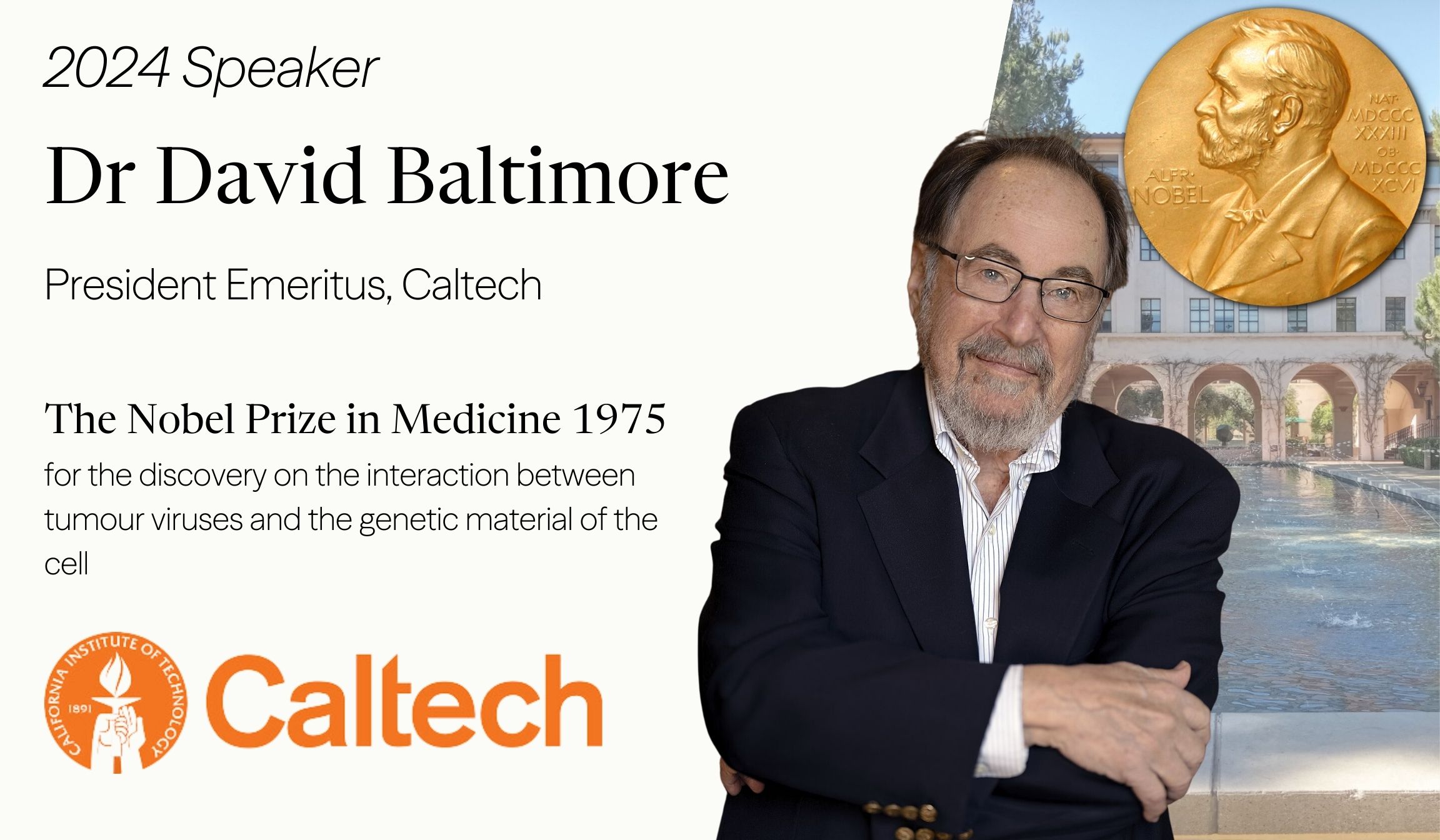
Dr David Baltimore
The Nobel Prize in Medicine 1975 for the discovery on the interaction between tumour viruses and the genetic material
of the cell
Dr David Baltimore is an American biologist, university administrator, and 1975 Nobel laureate in Physiology or Medicine. He is a professor of biology at the California Institute of Technology (Caltech), where he served as president from 1997 to 2006. He founded the Whitehead Institute and directed it from 1982 to 1990. In 2008, he served as president of the American Association for the Advancement of Science in 2008.
At age 37, Baltimore won the Nobel Prize with Renato Dulbecco and Howard M. Temin “for their discoveries concerning the interaction between tumour viruses and the genetic material of the cell”, specifically the discovery of the enzyme reverse transcriptase. He has contributed to immunology, virology, cancer research, biotechnology, and recombinant DNA research. He has also trained many doctoral students and postdoctoral fellows, several of whom have gone on to notable and distinguished research careers. In addition to the Nobel Prize, he has received a number of awards, including the U.S. National Medal of Science in 1999 and the Lasker Award in 2021.

Dr Thomas R. Cech
The Nobel Prize in Chemistry 1989 for the discovery of catalytic properties of RNA
Thomas Robert Cech is an American chemist who shared the 1989 Nobel Prize in Chemistry with Sidney Altman, for their discovery of the catalytic properties of RNA. Cech discovered that RNA could itself cut strands of RNA, suggesting that life might have started as RNA. He found that RNA can not only transmit instructions, but also that it can speed up the necessary reactions.
He also studied telomeres, and his lab discovered an enzyme, TERT (telomerase reverse transcriptase), which is part of the process of restoring telomeres after they are shortened during cell division.
As president of Howard Hughes Medical Institute, he promoted science education, and he teaches an undergraduate chemistry course at the University of Colorado
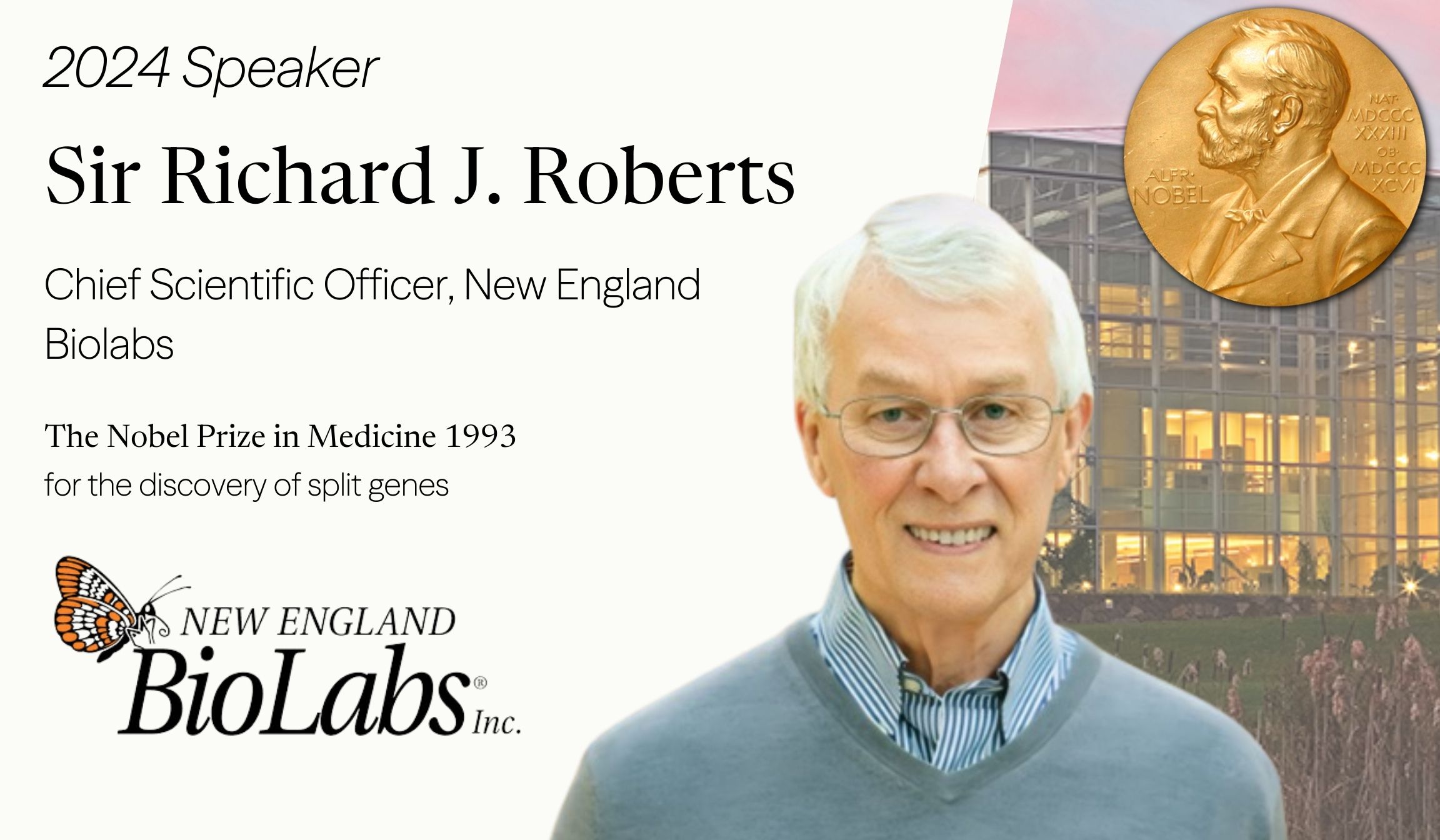
Sir Richard J. Roberts
The Nobel Prize in Medicine 1993 for the discovery of split genes
During 1969–1972, Sir Richard J. Roberts did postdoctoral research at Harvard University before moving to Cold Spring Harbor Laboratory, where he was hired by James Dewey Watson, a co-discoverer of the structure of DNA and a fellow Nobel laureate. In this period he also visited the MRC Laboratory of Molecular Biology for the first time, working alongside Fred Sanger. In 1977, he published his discovery of RNA splicing. In 1992, he moved to New England Biolabs. The following year, he shared a Nobel Prize with his former colleague at Cold Spring Harbor Phillip Allen Sharp.
His discovery of the alternative splicing of genes, in particular, has had a profound impact on the study and applications of molecular biology. The realisation that individual genes could exist as separate, disconnected segments within longer strands of DNA first arose in his 1977 study of adenovirus, one of the viruses responsible for causing the common cold. Robert’s research in this field resulted in a fundamental shift in our understanding of genetics, and has led to the discovery of split genes in higher organisms, including human beings.
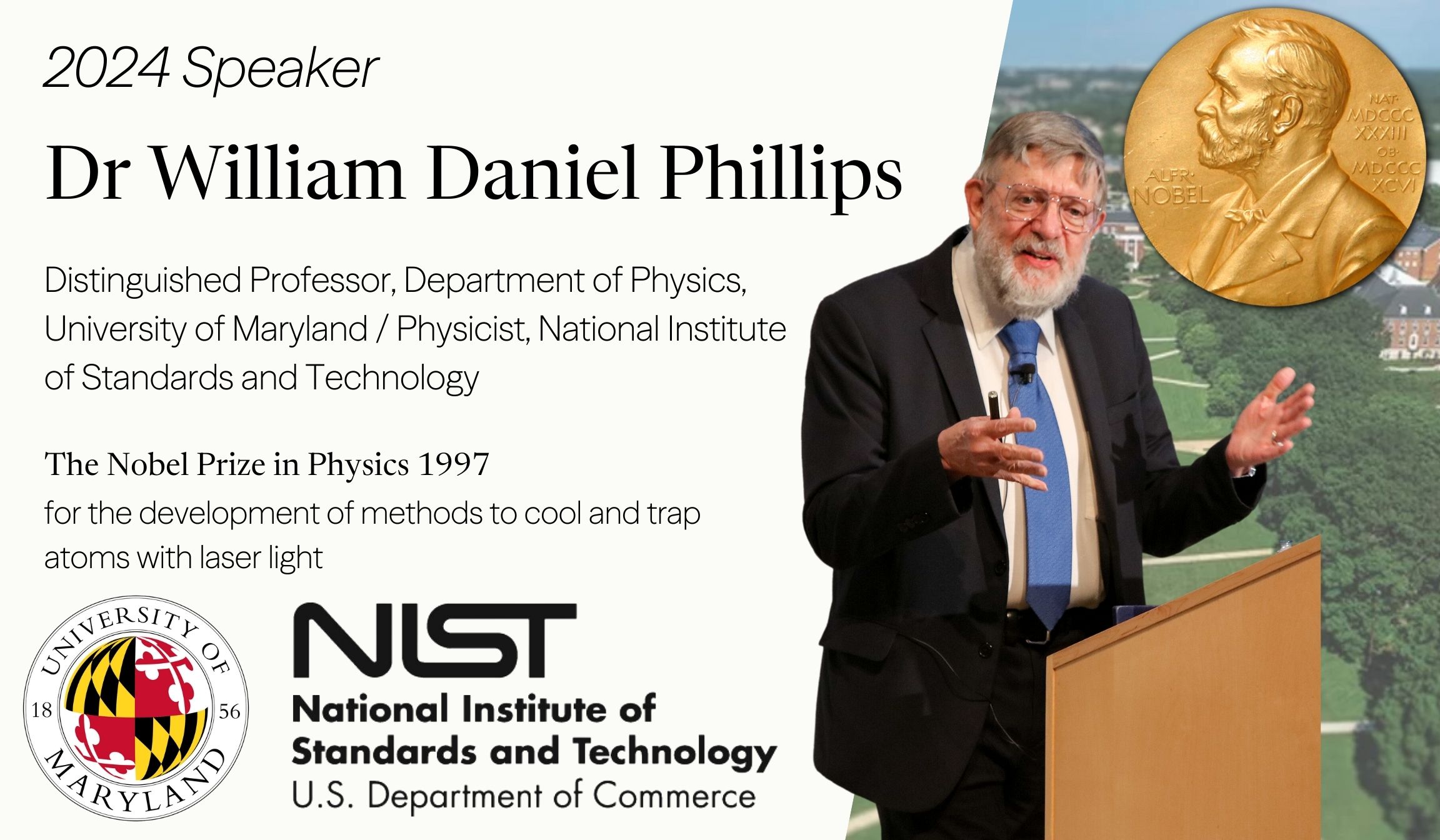
Dr William Daniel Phillips
The Nobel Prize in Chemistry 2004 for the discovery of ubiquitin-mediated protein degradation
In 1996, Dr William Daniel Phillips received the Albert A. Michelson Medal from The Franklin Institute. His doctoral thesis concerned the magnetic moment of the proton in H2O. He later did some work with Bose–Einstein condensates. In 1997 he won the Nobel Prize in Physics together with Claude Cohen-Tannoudji and Steven Chu for his contributions to laser cooling, a technique to slow the movement of gaseous atoms in order to better study them, at the National Institute of Standards and Technology, and especially for his invention of the Zeeman slower.
Dr Phillips is one of the 20 American recipients of the Nobel Prize in Physics to sign a letter addressed to President George W. Bush in May 2008, urging him to “reverse the damage done to basic science research in the Fiscal Year 2008 Omnibus Appropriations Bill” by requesting additional emergency funding for the Department of Energy’s Office of Science, the National Science Foundation, and the National Institute of Standards and Technology.
He was one of the 35 Nobel laureates who signed a letter urging President Obama to provide a stable $15 billion per year support for clean energy research, technology and demonstration.
He is also one of three well-known scientists and Methodist laity who have involved themselves in the religion and science dialogue. The other two scientists and fellow Methodists are chemist Charles Coulson and 1981 Nobel laureate Arthur Leonard Schawlow.
His discovery of the alternative splicing of genes, in particular, has had a profound impact on the study and applications of molecular biology. The realisation that individual genes could exist as separate, disconnected segments within longer strands of DNA first arose in his 1977 study of adenovirus, one of the viruses responsible for causing the common cold. Robert’s research in this field resulted in a fundamental shift in our understanding of genetics, and has led to the discovery of split genes in higher organisms, including human beings.
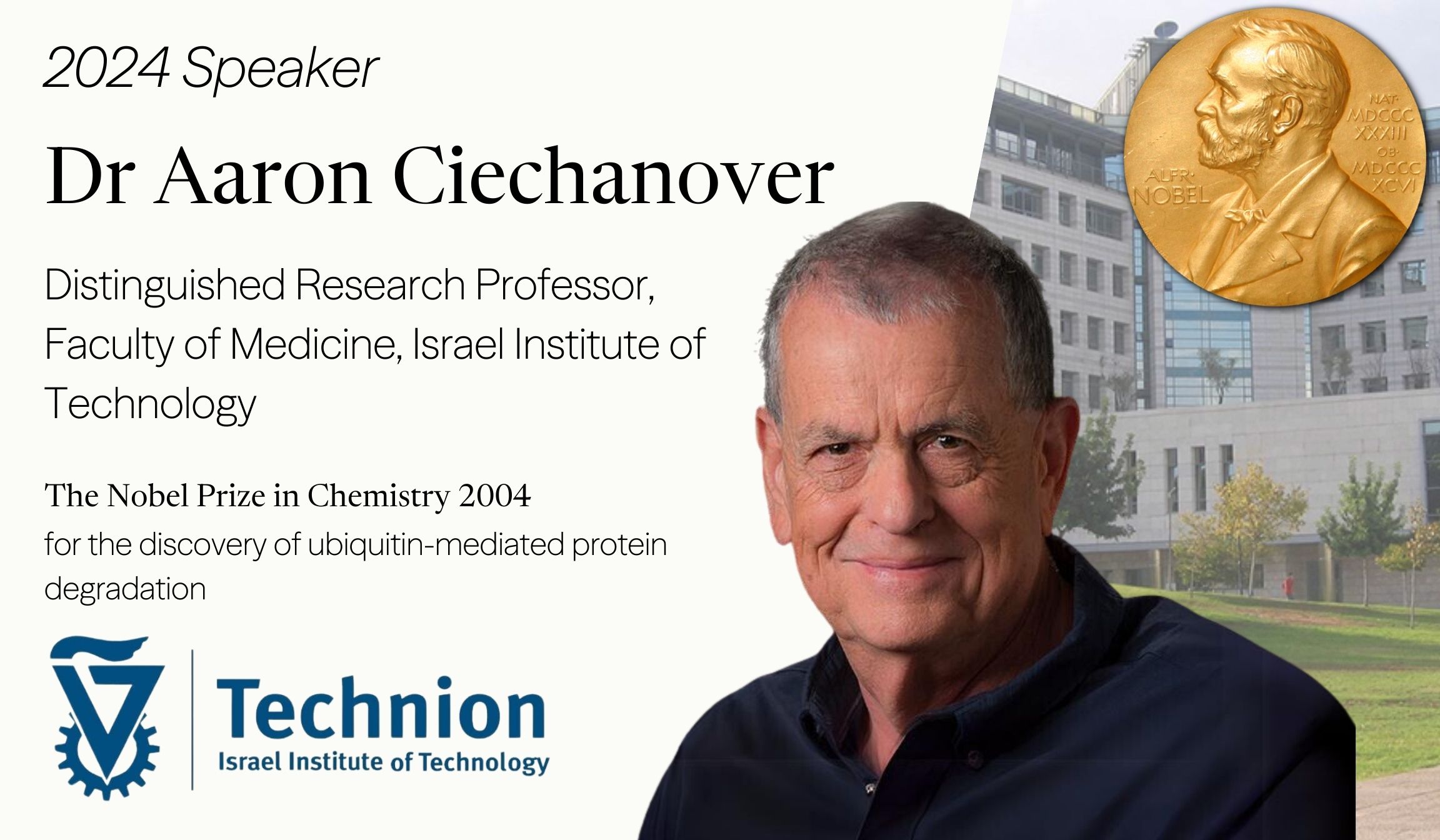
Dr Aaron Ciechanover
The Nobel Prize in Chemistry 2004 for the discovery of ubiquitin-mediated protein degradation
In 1996, Dr William Daniel Phillips received the Albert A. Michelson Medal from The Franklin Institute. His doctoral thesis concerned the magnetic moment of the proton in H2O. He later did some work with Bose–Einstein condensates. In 1997 he won the Nobel Prize in Physics together with Claude Cohen-Tannoudji and Steven Chu for his contributions to laser cooling, a technique to slow the movement of gaseous atoms in order to better study them, at the National Institute of Standards and Technology, and especially for his invention of the Zeeman slower.
Dr Phillips is one of the 20 American recipients of the Nobel Prize in Physics to sign a letter addressed to President George W. Bush in May 2008, urging him to “reverse the damage done to basic science research in the Fiscal Year 2008 Omnibus Appropriations Bill” by requesting additional emergency funding for the Department of Energy’s Office of Science, the National Science Foundation, and the National Institute of Standards and Technology.
He was one of the 35 Nobel laureates who signed a letter urging President Obama to provide a stable $15 billion per year support for clean energy research, technology and demonstration.
He is also one of three well-known scientists and Methodist laity who have involved themselves in the religion and science dialogue. The other two scientists and fellow Methodists are chemist Charles Coulson and 1981 Nobel laureate Arthur Leonard Schawlow.
His discovery of the alternative splicing of genes, in particular, has had a profound impact on the study and applications of molecular biology. The realisation that individual genes could exist as separate, disconnected segments within longer strands of DNA first arose in his 1977 study of adenovirus, one of the viruses responsible for causing the common cold. Robert’s research in this field resulted in a fundamental shift in our understanding of genetics, and has led to the discovery of split genes in higher organisms, including human beings.
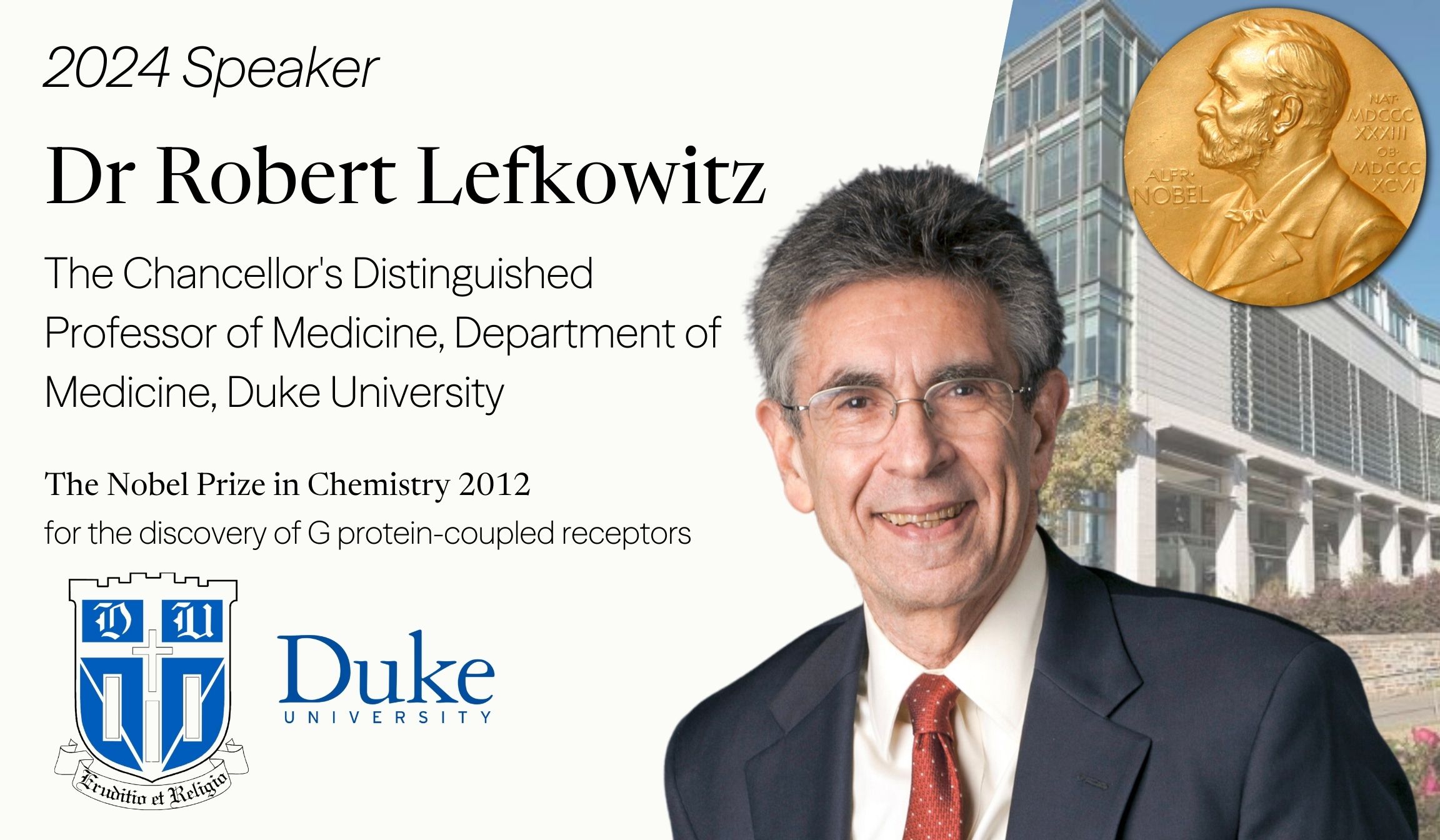
Dr Robert Lefkowitz
The Nobel Prize in Chemistry 2012 for the discovery of G protein-coupled receptors
Robert Joseph Lefkowitz is an American physician (internist and cardiologist) and biochemist. He is best known for his discoveries that reveal the inner workings of an important family G protein-coupled receptors, for which he was awarded the 2012 Nobel Prize for Chemistry with Brian Kobilka. He is currently an Investigator with the Howard Hughes Medical Institute as well as a James B. Duke Professor of Medicine and Professor of Biochemistry and Chemistry at Duke University.
Dr Lefkowitz made a remarkable contribution in the mid-1980s when he and his colleagues cloned the gene first for the β-adrenergic receptor, and then rapidly thereafter, for a total of 8 adrenergic receptors (receptors for adrenaline and noradrenaline). This led to the seminal discovery that all GPCRs (which include the β-adrenergic receptor) have a very similar molecular structure. The structure is defined by an amino acid sequence which weaves its way back and forth across the plasma membrane seven times. Today we know that about 1,000 receptors in the human body belong to this same family. The importance of this is that all of these receptors use the same basic mechanisms so that pharmaceutical researchers now understand how to effectively target the largest receptor family in the human body. Today, as many as 30 to 50 percent of all prescription drugs are designed to “fit” like keys into the similarly structured locks of Dr Lefkowitz’ receptors—everything from anti-histamines to ulcer drugs to beta blockers that help relieve hypertension, angina and coronary disease.
Dr Lefkowitz is among the most highly cited researchers in the fields of biology, biochemistry, pharmacology, toxicology, and clinical medicine according to Thomson-ISI.
Dr Phillips is one of the 20 American recipients of the Nobel Prize in Physics to sign a letter addressed to President George W. Bush in May 2008, urging him to “reverse the damage done to basic science research in the Fiscal Year 2008 Omnibus Appropriations Bill” by requesting additional emergency funding for the Department of Energy’s Office of Science, the National Science Foundation, and the National Institute of Standards and Technology.
He was one of the 35 Nobel laureates who signed a letter urging President Obama to provide a stable $15 billion per year support for clean energy research, technology and demonstration.
He is also one of three well-known scientists and Methodist laity who have involved themselves in the religion and science dialogue. The other two scientists and fellow Methodists are chemist Charles Coulson and 1981 Nobel laureate Arthur Leonard Schawlow.
His discovery of the alternative splicing of genes, in particular, has had a profound impact on the study and applications of molecular biology. The realisation that individual genes could exist as separate, disconnected segments within longer strands of DNA first arose in his 1977 study of adenovirus, one of the viruses responsible for causing the common cold. Robert’s research in this field resulted in a fundamental shift in our understanding of genetics, and has led to the discovery of split genes in higher organisms, including human beings.
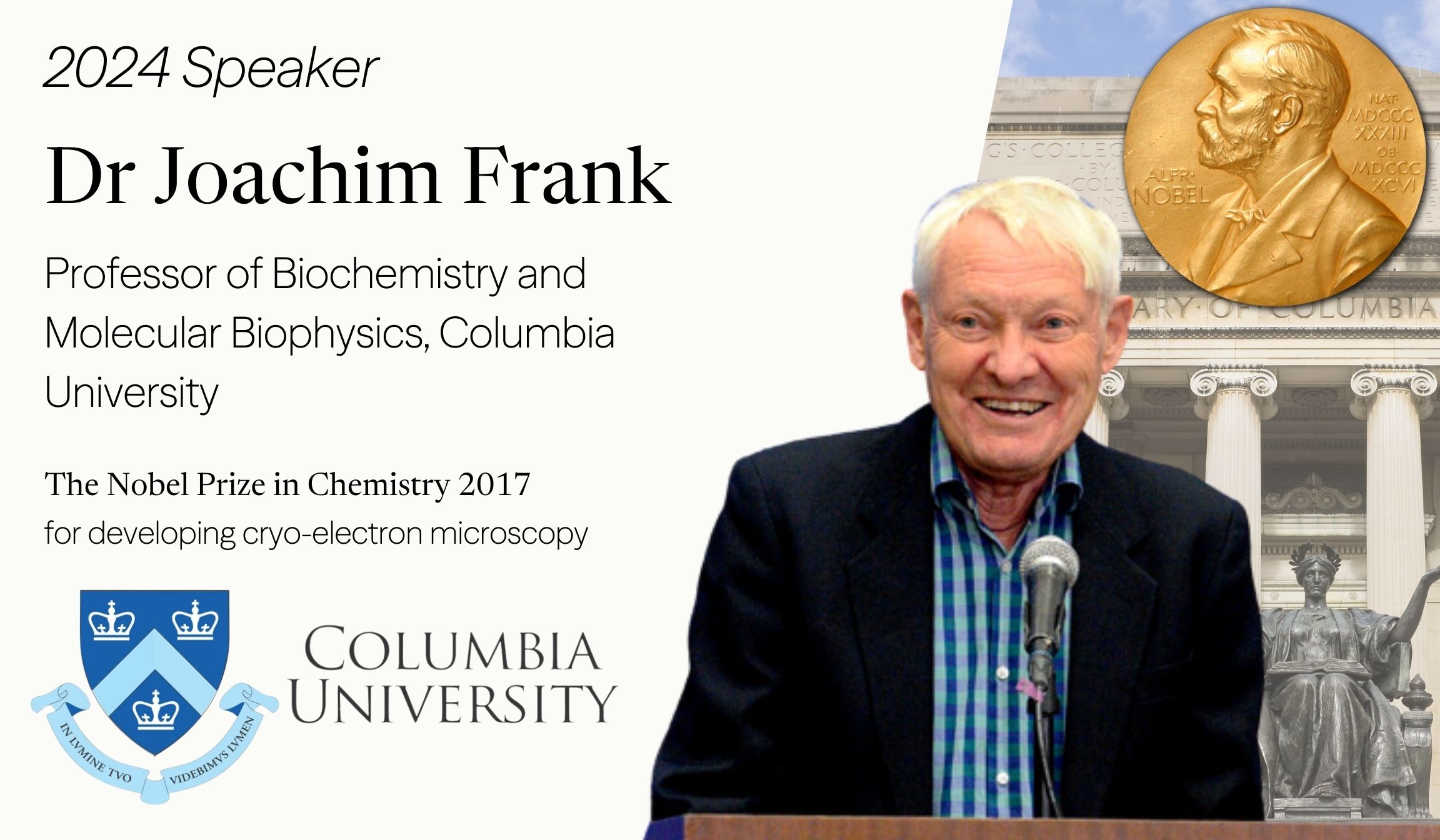
Dr Joachim Frank
The Nobel Prize in Chemistry 2017 for developing cryo-electron microscopy
Joachim Frank is a German-American biophysicist at Columbia University and a Nobel laureate. He is regarded as the founder of single-particle cryo-electron microscopy (cryo-EM), for which he shared the Nobel Prize in Chemistry in 2017 with Jacques Dubochet and Richard Henderson. He also made significant contributions to structure and function of the ribosome from bacteria and eukaryotes.
In 1975, Dr Frank was offered a position of senior research scientist in the Division of Laboratories and Research (now Wadsworth Center), New York State Department of Health,where he started working on single-particle approaches in electron microscopy. In 1985 he was appointed associate and then (1986) full professor at the newly formed Department of Biomedical Sciences of the University at Albany, State University of New York. In 1987 and 1994, he went on sabbaticals in Europe, one to work with Richard Henderson, Laboratory of Molecular Biology Medical Research Council in Cambridge and the other as a Humboldt Research Award winner with Kenneth C. Holmes, Max Planck Institute for Medical Research in Heidelberg. In 1998, Dr Frank was appointed investigator of the Howard Hughes Medical Institute (HHMI). Since 2003 he was also lecturer at Columbia University, and he joined Columbia University in 2008 as professor of Biochemistry and Molecular Biophysics and of biological sciences.
Dr Lefkowitz made a remarkable contribution in the mid-1980s when he and his colleagues cloned the gene first for the β-adrenergic receptor, and then rapidly thereafter, for a total of 8 adrenergic receptors (receptors for adrenaline and noradrenaline). This led to the seminal discovery that all GPCRs (which include the β-adrenergic receptor) have a very similar molecular structure. The structure is defined by an amino acid sequence which weaves its way back and forth across the plasma membrane seven times. Today we know that about 1,000 receptors in the human body belong to this same family. The importance of this is that all of these receptors use the same basic mechanisms so that pharmaceutical researchers now understand how to effectively target the largest receptor family in the human body. Today, as many as 30 to 50 percent of all prescription drugs are designed to “fit” like keys into the similarly structured locks of Dr Lefkowitz’ receptors—everything from anti-histamines to ulcer drugs to beta blockers that help relieve hypertension, angina and coronary disease.
Dr Lefkowitz is among the most highly cited researchers in the fields of biology, biochemistry, pharmacology, toxicology, and clinical medicine according to Thomson-ISI.
Dr Phillips is one of the 20 American recipients of the Nobel Prize in Physics to sign a letter addressed to President George W. Bush in May 2008, urging him to “reverse the damage done to basic science research in the Fiscal Year 2008 Omnibus Appropriations Bill” by requesting additional emergency funding for the Department of Energy’s Office of Science, the National Science Foundation, and the National Institute of Standards and Technology.
He was one of the 35 Nobel laureates who signed a letter urging President Obama to provide a stable $15 billion per year support for clean energy research, technology and demonstration.
He is also one of three well-known scientists and Methodist laity who have involved themselves in the religion and science dialogue. The other two scientists and fellow Methodists are chemist Charles Coulson and 1981 Nobel laureate Arthur Leonard Schawlow.
His discovery of the alternative splicing of genes, in particular, has had a profound impact on the study and applications of molecular biology. The realisation that individual genes could exist as separate, disconnected segments within longer strands of DNA first arose in his 1977 study of adenovirus, one of the viruses responsible for causing the common cold. Robert’s research in this field resulted in a fundamental shift in our understanding of genetics, and has led to the discovery of split genes in higher organisms, including human beings.
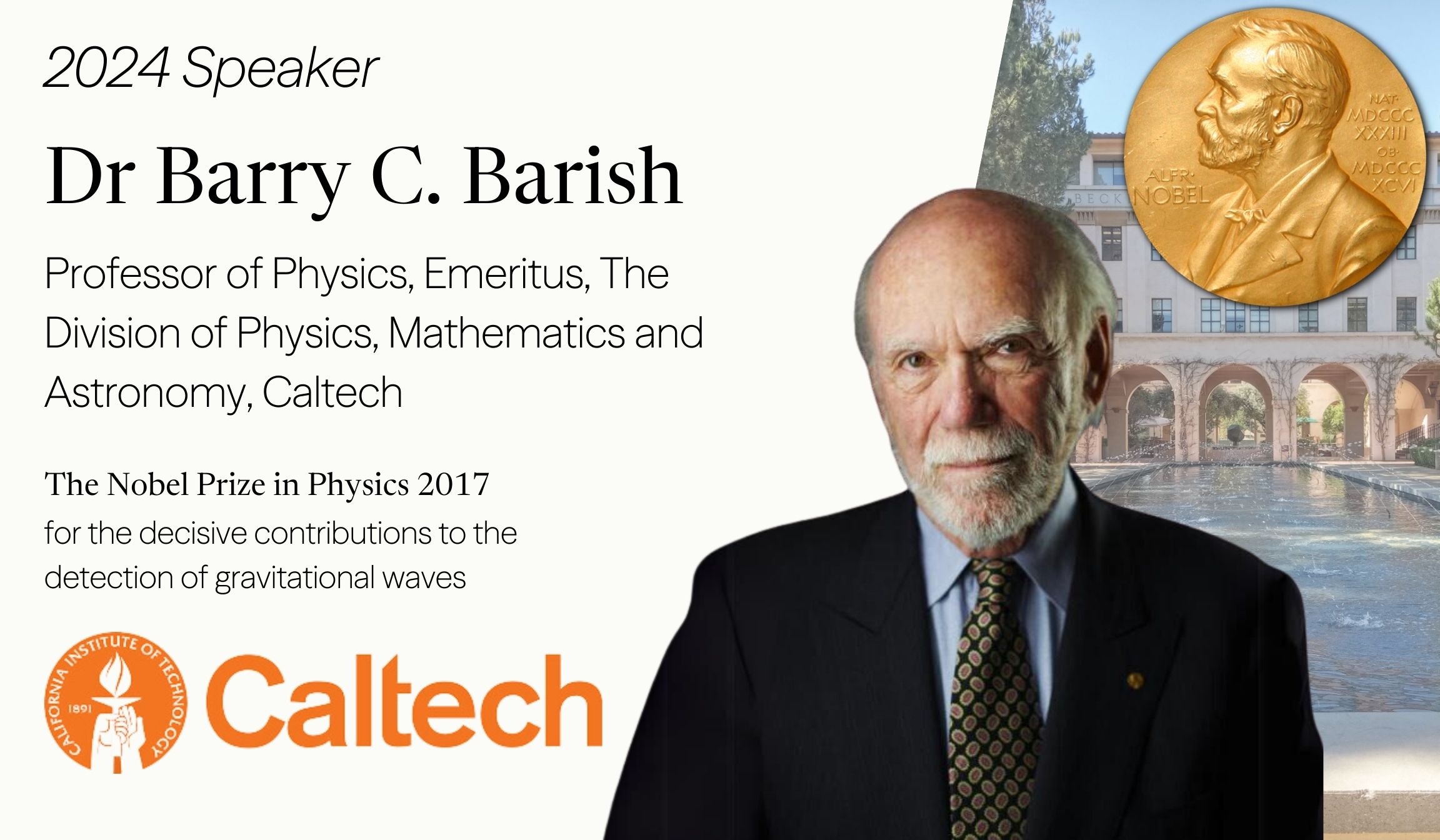
Dr Barry C. Barish
The Nobel Prize in Physics 2017 for the decisive contributions to the detection of gravitational waves
Dr Barry Clark Barish is an American experimental physicist and Nobel Laureate. He is a Linde Professor of Physics, emeritus at California Institute of Technology and a leading expert on gravitational waves.
In 2017, Barish was awarded the Nobel Prize in Physics along with Rainer Weiss and Kip Thorne “for decisive contributions to the LIGO detector and the observation of gravitational waves”. He said, “I didn’t know if I would succeed. I was afraid I would fail, but because I tried, I had a breakthrough.”
In 2018, he joined the faculty at University of California, Riverside, becoming the university’s second Nobel Prize winner on the faculty.
In the fall of 2023, he joined Stony Brook University as the inaugural President’s Distinguished Endowed Chair in Physics.
In 2023, Dr Barish was awarded the National Medal of Science by President Biden in a White House ceremony.
In 1975, Dr Frank was offered a position of senior research scientist in the Division of Laboratories and Research (now Wadsworth Center), New York State Department of Health,where he started working on single-particle approaches in electron microscopy. In 1985 he was appointed associate and then (1986) full professor at the newly formed Department of Biomedical Sciences of the University at Albany, State University of New York. In 1987 and 1994, he went on sabbaticals in Europe, one to work with Richard Henderson, Laboratory of Molecular Biology Medical Research Council in Cambridge and the other as a Humboldt Research Award winner with Kenneth C. Holmes, Max Planck Institute for Medical Research in Heidelberg. In 1998, Dr Frank was appointed investigator of the Howard Hughes Medical Institute (HHMI). Since 2003 he was also lecturer at Columbia University, and he joined Columbia University in 2008 as professor of Biochemistry and Molecular Biophysics and of biological sciences.
Dr Lefkowitz made a remarkable contribution in the mid-1980s when he and his colleagues cloned the gene first for the β-adrenergic receptor, and then rapidly thereafter, for a total of 8 adrenergic receptors (receptors for adrenaline and noradrenaline). This led to the seminal discovery that all GPCRs (which include the β-adrenergic receptor) have a very similar molecular structure. The structure is defined by an amino acid sequence which weaves its way back and forth across the plasma membrane seven times. Today we know that about 1,000 receptors in the human body belong to this same family. The importance of this is that all of these receptors use the same basic mechanisms so that pharmaceutical researchers now understand how to effectively target the largest receptor family in the human body. Today, as many as 30 to 50 percent of all prescription drugs are designed to “fit” like keys into the similarly structured locks of Dr Lefkowitz’ receptors—everything from anti-histamines to ulcer drugs to beta blockers that help relieve hypertension, angina and coronary disease.
Dr Lefkowitz is among the most highly cited researchers in the fields of biology, biochemistry, pharmacology, toxicology, and clinical medicine according to Thomson-ISI.
Dr Phillips is one of the 20 American recipients of the Nobel Prize in Physics to sign a letter addressed to President George W. Bush in May 2008, urging him to “reverse the damage done to basic science research in the Fiscal Year 2008 Omnibus Appropriations Bill” by requesting additional emergency funding for the Department of Energy’s Office of Science, the National Science Foundation, and the National Institute of Standards and Technology.
He was one of the 35 Nobel laureates who signed a letter urging President Obama to provide a stable $15 billion per year support for clean energy research, technology and demonstration.
He is also one of three well-known scientists and Methodist laity who have involved themselves in the religion and science dialogue. The other two scientists and fellow Methodists are chemist Charles Coulson and 1981 Nobel laureate Arthur Leonard Schawlow.
His discovery of the alternative splicing of genes, in particular, has had a profound impact on the study and applications of molecular biology. The realisation that individual genes could exist as separate, disconnected segments within longer strands of DNA first arose in his 1977 study of adenovirus, one of the viruses responsible for causing the common cold. Robert’s research in this field resulted in a fundamental shift in our understanding of genetics, and has led to the discovery of split genes in higher organisms, including human beings.
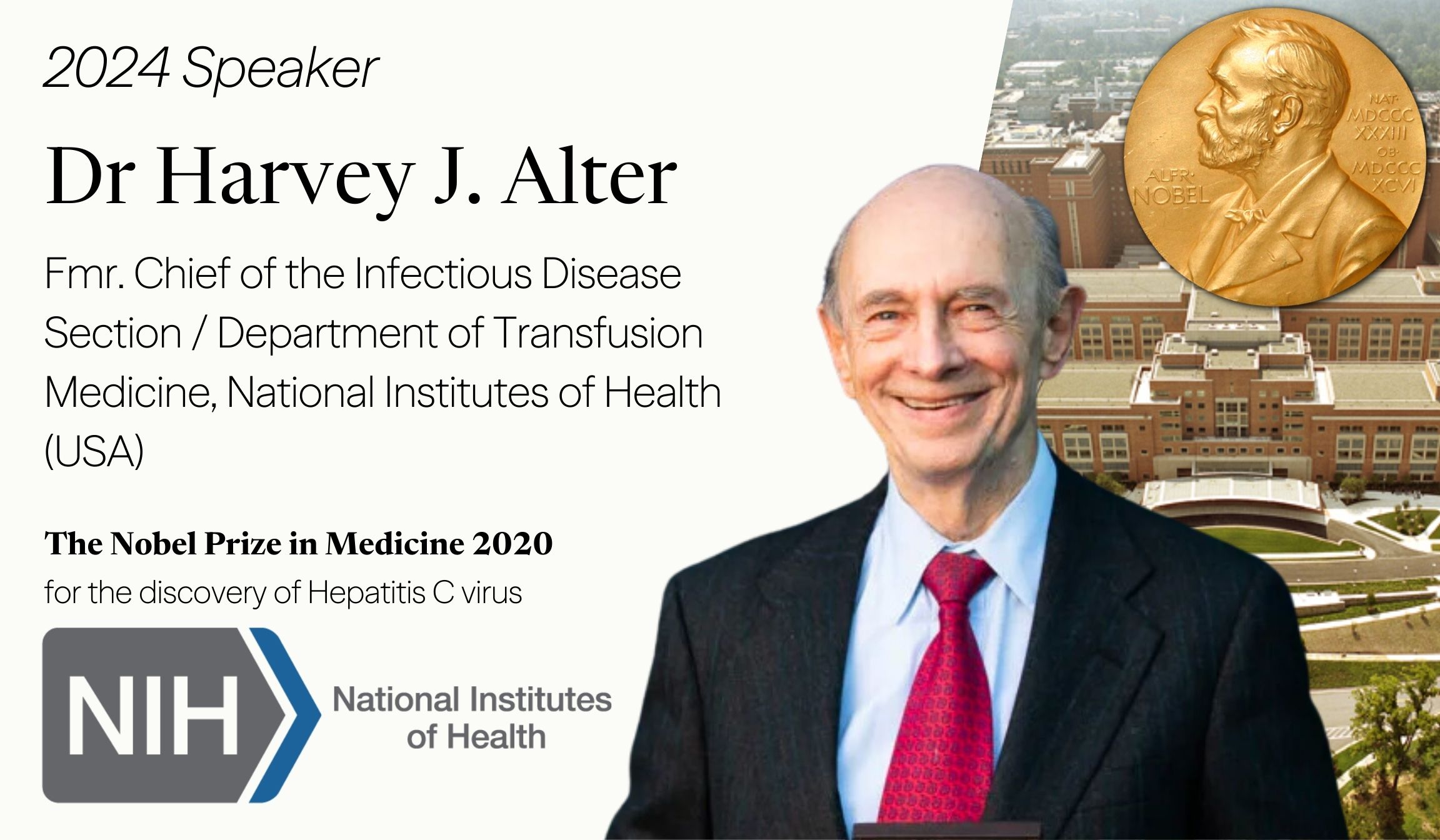
Dr Harvey J. Alter
The Nobel Prize in Medicine 2020 for the discovery of Hepatitis C virus
Dr Harvey J. Alter is an American medical researcher, virologist, physician and Nobel Prize laureate, who is best known for his work that led to the discovery of the hepatitis C virus. Alter is the former chief of the infectious disease section and the associate director for research of the Department of Transfusion Medicine at the Warren Grant Magnuson Clinical Center in the National Institutes of Health (NIH) in Bethesda, Maryland. In the mid-1970s, Alter and his research team demonstrated that most post-transfusion hepatitis cases were not due to hepatitis A or hepatitis B viruses. Working independently, Alter and Edward Tabor, a scientist at the U.S. Food and Drug Administration, proved through transmission studies in chimpanzees that a new form of hepatitis, initially called “non-A, non-B hepatitis” caused the infections, and that the causative agent was probably a virus. This work eventually led to the discovery of the hepatitis C virus in 1988, for which he shared the Nobel Prize in Physiology or Medicine in 2020 along with Michael Houghton and Charles M. Rice.
Dr Alter has received recognition for the research leading to the discovery of the virus that causes hepatitis C. He was awarded the Distinguished Service Medal, the highest award conferred to civilians in United States government public health service, and the 2000 Albert Lasker Award for Clinical Medical Research.
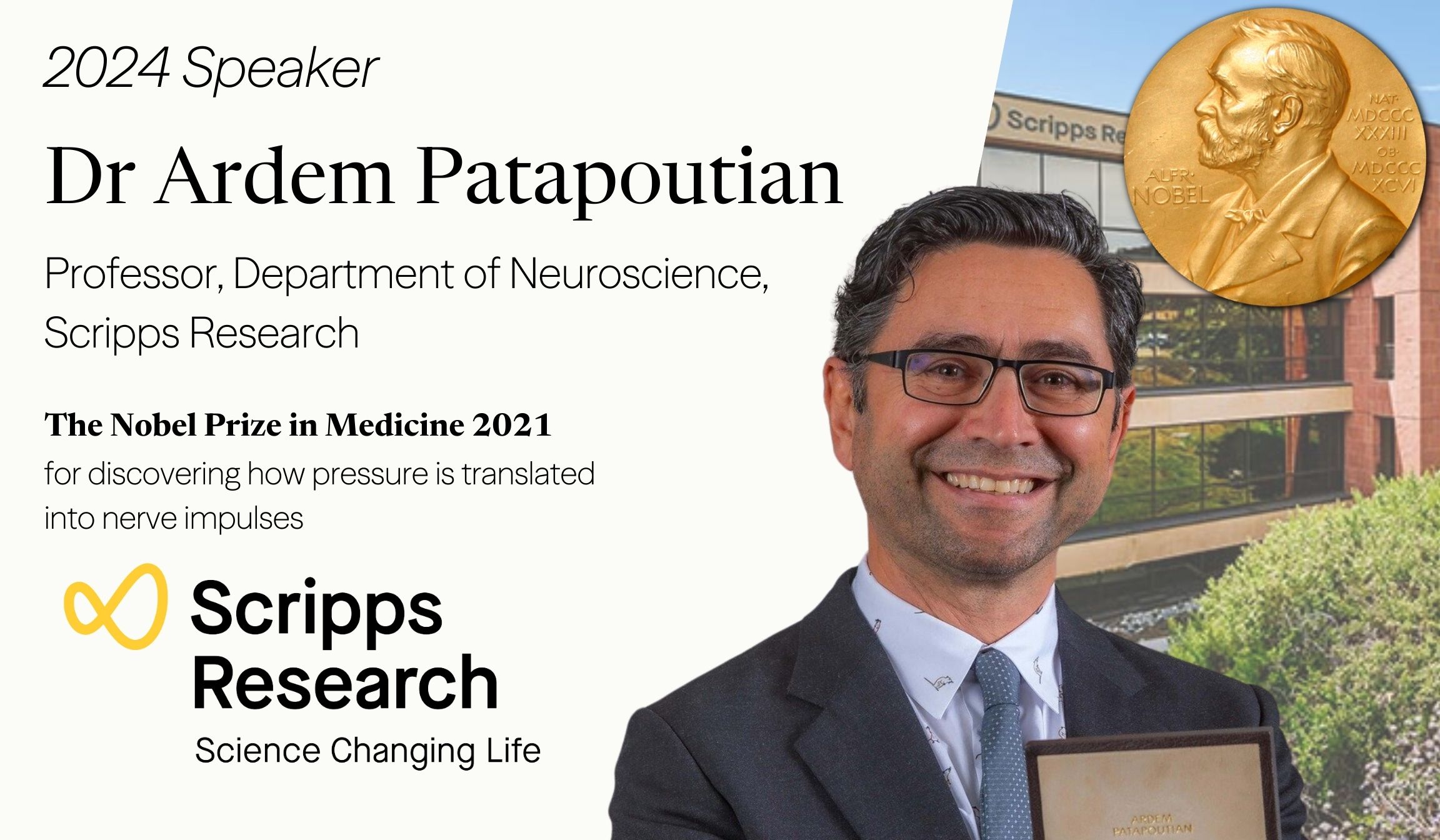
Dr Ardem Patapoutian
The Nobel Prize in Medicine 2021 for discovering how pressure is translated into nerve impulses
Dr Ardem Patapoutian is an Lebanese-American molecular biologist, neuroscientist, and Nobel Prize laureate of Armenian descent. He is known for his work in characterising the PIEZO1, PIEZO2, and TRPM8 receptors that detect pressure, menthol, and temperature. Dr Patapoutian is a neuroscience professor and Howard Hughes Medical Institute investigator at Scripps Research in La Jolla, California. In 2021, he won the Nobel Prize in Physiology or Medicine jointly with David Julius.
Dr Alter has received recognition for the research leading to the discovery of the virus that causes hepatitis C. He was awarded the Distinguished Service Medal, the highest award conferred to civilians in United States government public health service, and the 2000 Albert Lasker Award for Clinical Medical Research.
Apply to CCIR Academy to present at the Symposium
The symposium is open to apply for all current and past CCIR students, who enrolled before June 15th, 2025, regardless of the status of their research.
Participants must submit a 200 to 400 word fully polished abstract. A most recent draft of the paper is also encouraged, but not required for the submission.
Submit to Cambridge Re:think Essay Competition
Our annual essay competition invites students to reflect on some of the most pressing issues confronting our world today. This year, the essay prompts are contributed by distinguished professors from Harvard, Brown, UC Berkeley, Cambridge, Oxford, and MIT.
Award recipients will also be invited to attend the Nobel Keynote speeches at the Symposium and attend the Reception (award ceremony and dinner) on the evening of July 30th at King’s College’s hall at the University of Cambridge.
The essay competition is free and open to all students who have yet to commence undergraduate studies. There is also no cost for the award recipients to attend the Nobel Keynote speeches and Reception (award ceremony and dinner) at King’s College.
Symposium and
Reception
at the University of
Cambridge
Award winners will be invited to attend the Award Ceremony and Dinner hosted at the King’s College, University of Cambridge on 30th July, 2025.
The Dinner is free of charge for the recipients of Gold, Silver, Bronze, Logos, Pathos, and Ethos prizes.
Honourable Mention recipients are also invited to the dinner for a 95 GBP per person ticket.
Tickets for additional attendees accompanying recipients are also available at 95 GBP per person in limited quantity.
The Dinner is by invitation and only open for CCIR Cambridge Re:think Essay Competition award recipients and CCIR Research Symposium presenters, and their companies. The Dinner is not open for the general public.

Symposium at the King’s College
Both the student presentations and the Keynote speech by Nobel laureates will take place (in person and virtually) at the conference rooms of King’s College at the University of Cambridge, with views of the college’s Provost Lodge, Library and Courtyard.
The Award Ceremony and Dinner will be held in the Hall in the evening of 30th July, 2025.

The Hall at King’s College, Cambridge
The Hall was designed by William Wilkins in the 1820s and is considered one of the most magnificent halls of its era. The first High Table dinner in the Hall was held in February 1828, and ever since then, the splendid Hall has been where members of the college eat and where formal dinners have been held for centuries.
The Reception will be held in the Hall in the evening of 30th July, 2025. The Reception is a traditional Oxbridge style high table dinner, with select CCIR professor mentors expected to sit at the high table.

Back Lawn
Stretching out down to the River Cam, the Back Lawn has one of the most iconic backdrop of King’s College Chapel.
The early evening reception will be hosted on the Back Lawn with the iconic Chapel in the background (weather permitting).

King’s College Chapel
With construction started in 1446 by Henry VI and took over a century to build, King’s College Chapel is one of the most iconic buildings in the world, and is a splendid example of late Gothic architecture.
Attendees are also granted complimentary access to the King’s College Chapel before and during the event.